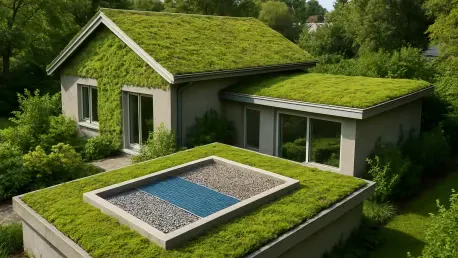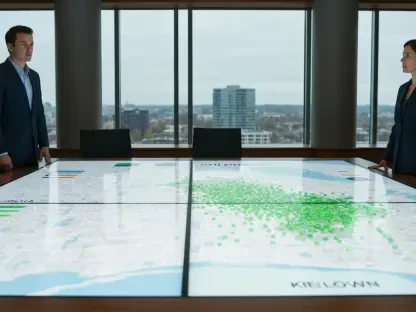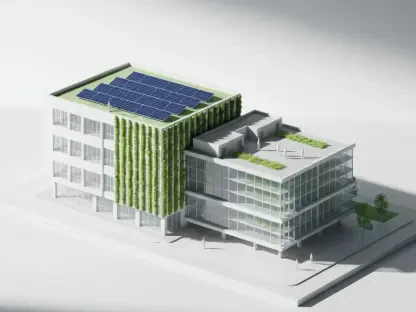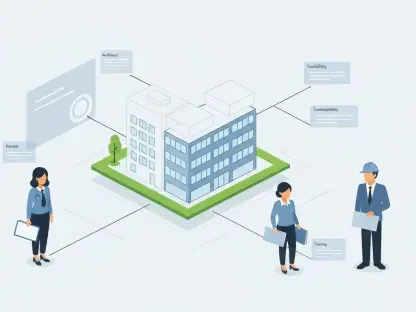In the heart of sprawling urban landscapes, where concrete jungles dominate and pollution chokes the air, a quiet revolution is taking root atop buildings, offering a potential solution to one of the most pressing environmental issues. Green roofs, those lush layers of vegetation covering urban structures, have emerged as more than just an aesthetic or energy-saving feature; they are now being recognized for a surprising environmental benefit. Recent research from Tongji University in Shanghai has unveiled their potential to filter microplastics from rainwater, capturing up to 97.5% of these pervasive pollutants in controlled studies. This discovery adds a compelling dimension to the ongoing battle against microplastic pollution, a problem infiltrating everything from human blood to deep-sea ecosystems. As cities grapple with escalating environmental challenges, the question arises: could these verdant rooftop solutions be a key to cleaner urban futures? This article delves into the latest findings, exploring how green roofs might address microplastic pollution while tackling other pressing urban issues.
Unveiling the Hidden Potential of Green Roofs
Microplastic Filtration: A Groundbreaking Discovery
Amidst the clamor of urban life, a silent yet powerful ally has been found in the fight against pollution. Researchers at Tongji University have demonstrated through lab-scale experiments in Shanghai that green roofs—comprising soil, plants, and waterproof membranes—can trap an astonishing 97.5% of microplastics present in simulated rainfall. These tiny pollutants, often stemming from sources like ground rubber or synthetic clothing fibers, pose significant risks to both ecosystems and human health. The study’s results suggest that in a city of over 24 million like Shanghai, even a modest adoption of green roofs could intercept nearly 62 tons of microplastics annually. This finding is particularly striking given the pervasive nature of microplastics, which have been detected in alarming locations worldwide. Such filtration capacity positions green roofs as a passive yet effective tool in densely populated areas where industrial and human activities amplify pollution levels, offering a glimmer of hope for urban environmental management.
Beyond Filtration: Broader Environmental Impacts
While the ability to capture microplastics is a headline-grabbing revelation, green roofs bring a suite of additional benefits that enhance urban sustainability. These vegetative coverings help mitigate the urban heat island effect, a phenomenon where cities experience significantly higher temperatures due to concrete and asphalt absorbing heat. By reducing ambient temperatures, green roofs lower energy demands for cooling, decrease heat-related health issues, and cut down on air pollution. Furthermore, they play a crucial role in managing stormwater runoff, preventing flooding in areas prone to heavy rainfall. Their durability, often lasting twice as long as conventional roofs, also translates to economic savings for building owners. As global warming intensifies heat waves, making some urban zones nearly unlivable, the multifaceted advantages of green roofs underscore their importance as a nature-based solution to modern challenges, weaving together environmental, economic, and social benefits in a single innovative package.
Challenges and Future Directions for Green Roofs
Navigating the Limitations of Microplastic Capture
Despite the promising potential of green roofs in combating microplastic pollution, several hurdles must be addressed to ensure their effectiveness over time. One significant challenge lies in the varying shapes of microplastics; while irregularly shaped particles are easily trapped by rooftop soils, smoother fibers from synthetic materials can be resuspended into the atmosphere under windy conditions, potentially negating some benefits. Additionally, the soil on these roofs risks becoming saturated with microplastics, raising concerns about long-term retention capacity. Intriguing possibilities, such as the role of earthworms in metabolizing these pollutants, have been proposed as a biological workaround, though this remains speculative. These complexities highlight the need for careful design and maintenance strategies to maximize the pollution-fighting capabilities of green roofs, ensuring they do not inadvertently contribute to environmental issues through secondary release of captured contaminants.
Scaling Up: The Path to Real-World Implementation
Looking ahead, the transition from lab-based findings to widespread urban application presents both an opportunity and a challenge for green roof technology. The research team from Tongji University is committed to conducting long-term field studies on full-scale green roofs to better understand how microplastics are retained or released over extended periods. Such studies are critical in cities where pollution and heat island effects are most acute, providing data to refine installation and maintenance practices. Scaling up implementation will require collaboration between policymakers, urban planners, and environmental scientists to integrate green roofs into building codes and city planning initiatives. Addressing gaps in current knowledge about soil saturation and pollutant dynamics will be essential to validate their efficacy on a broader scale. As urban centers continue to grow, the push for real-world testing and adoption of green roofs signals a proactive step toward sustainable cityscapes, balancing innovation with practical environmental stewardship.
Reflecting on a Verdant Solution
As the battle against urban pollution and climate challenges intensifies, the pioneering work at Tongji University sheds light on an unexpected ally in green roofs. Their remarkable capacity to filter microplastics from rainwater, coupled with benefits like heat island mitigation and energy cost reduction, marks them as a versatile tool in environmental management. Yet, hurdles such as soil saturation and the risk of pollutant resuspension underscore the intricacies of their application. Moving forward, the commitment to extensive field studies promises to bridge the gap between controlled experiments and real-world impact. Urban planners and policymakers now face the task of integrating this technology into city frameworks, potentially transforming skylines into bastions of sustainability. Encouraging further research and fostering collaborations will be vital to refine and expand this approach, ensuring that green roofs become a cornerstone of cleaner, healthier urban environments for generations to come.









